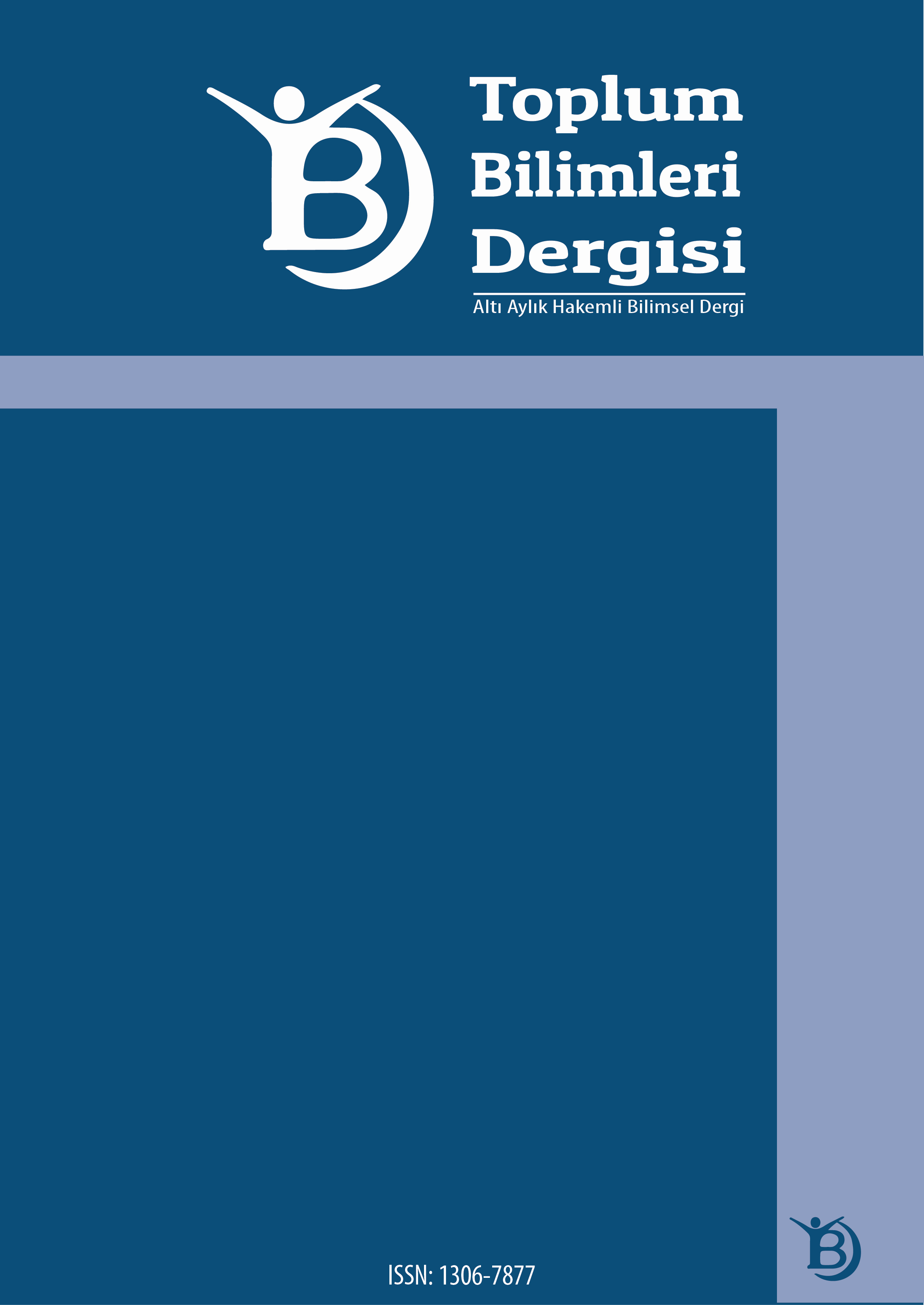Author :
Abstract
Keywords
Abstract
Women and men have different types of religiosity as a result of their roles and status in the context of sociocultural life. Research indicates that women with their inborn biological characteristics and their position in social life seem to be much more religious both qualitatively and quantatively. The fact that women are much more religious is a paradox given their position in social life. This study deals with an analysis of religiosity of women that is regarded as a paradox. In order to carry out such an analysis, both gender and sociocultural role and status of women are used to investigate the factors shaping the religiosity of women. Thus, the assumption that women are much more religious is shown and analysed using factual samples from several cultures and theoretical information on the religiosity of women is provided as an outcome of the paradox.
Keywords
- Berktay, Fatmagül (2002). “Doğu ile Batı’nın Birleştiği Yer: Kadın İmgesinin Kurgulanışı”, Modern Türkiye’de Siyasi Düşünce: Modernleşme ve Batıcılık. Tanıl Bora, Murat Gültekingil (eds.), İletişim Yayınları, İstanbul, ss.275‐285.
- Buitelaar, Marjo (1991). Fasting and Feasting in Morocco An Ethnographic Study of the Month of Ramadan, Academisch Proefschrift, Nijmegen.
- Carroll, Michael P. (2004). “Give Me that Ol’ Time Hormonal Religion”, Journal for the Scientific Study of Religion, 43:2, ss. 275–278.
- Davie, Grace (2005). “Din Sosyolojisi”, Din, Toplum ve Kültür, Der. ve Çev. A. Coşkun, İz yay., İst. 2005, 101‐120.
- Doltaş, Dilek (1991). “Feminizm Açısından Sekizinci Günah ve Bir Cinayet Romanı”, Toplum ve Bilim, Sayı: 53, ss.83‐95.
- Fişek, Güler O. (1990). “Cinsiyet Konumu ve Psikoloji: Eleştirel Bir İnceleme”, Toplum ve Bilim, Sayı: 50, ss.73‐84.
- Francis, Leslie J., Carolyn Wilcox (1998). “Religiosity and Femininity: Do Women Really Hold a More Positive Attitude Toward Christianity?”, Journal for the Scientific Study of Religion, 37 (3), ss. 462‐469.
- Holy, Ladislav (1988). “Gender and Ritual in an Islamic Society: The Berti of Darfur”, Man, New Series, Vol.23, No.3, ss. 469‐487.
- Iannaccone, Laurence R. (1990). “Religious Practice: A Human Capital Approach”, Journal for the Scientific Study of Religion, , 29 (3), ss. 297–314.
- Kecskes, Robert (2000). “Religiosität von Frauen und Männern im internationalen Vergleich”, Religion und Geschlechterverhältnis, (Hrsg.) Ingrid Lukatis, Regina Sommer, Christof Wolf, Leske+Budrich, Opladen, 85‐100.
- Loewenthal Kate M., Andrew K. MacLeod, Marco Cinnirella, (2002). “Are Women More Religious Than Men? Gender Differences in Religious Activity Among Different Religious Groups in the UK” , Personality and Individual Differences, 32, ss.133‐139.
- Malinowski, Bronislaw (1989). İlkel Toplumlarda Cinsellik ve Baskı, Çev. Hüseyin Portakal, Kabalcı, İstanbul.
- Marshall, Gordon (1999). Sosyoloji Sözlüğü, Çev. Osman Akınhay‐Derya Kömürcü, Bilim ve Sanat, Ankara.
- Miller Alan S., John P. Hoffmann (1995). “Risk and Religion: An Explanation of Gender Differences in Religiosity”, Journal for the Scientific Study of Religion, 34(1), ss. 63‐ 75.
- Miller, Alan S., Rodney Stark (2002). “Gender and Religiousness: Can Socialization Explanations Be Saved?”, American Journal of Sociology, 107/6, 1399–1423.
- Nelsen, Hart M., Neil H. Cheek, Paul Au (1985). “Gender Differences in Images of God”, Journal for the Scientific Study of Religion, 24(4), ss.396–402.
- Ozorak, Elizabeth Weiss (1996). “The Power, but not the Glory: How Women Empower Themselves Through Religion”, Journal for the Scientific Study of Religion, 35 (1), ss. 17‐29.
- Roberts, Michael K., James D. Davidson, (1984). “The Nature and Sources of Religious Involvement”, Review of Religious Research, 25 (4), ss.334–350.
- Sirman, Nükhet (1993). “Köy Kadınının Aile ve Evlilikte Güçlenme Mücadelesi”, 1980’ler Türkiyesinde Kadın Bakış Açısından Kadınlar, Şirin Tekeli (Der.), İletişim, İstanbul, ss.247‐277.
- Stark, Rodney (2002). “Physiology and Faith: Addressing the “Universal” Gender Difference in Religious Commitment”, Journal for the Scientific Study of Religion, 41:3, ss. 495– 507.
- Şahin, İlkay (2001). Gelenek ve Değişim Açısından Kadınların Dinî Yaşantıları, Tutum ve Dav‐ ranışları: Boğazlıyan Örneği, (Yüksek Lisans Tezi) Erciyes Üniversitesi Sosyal Bilimler Enstitüsü, Kayseri.
- Şahin, İlkay (2008). Göçmen Kadınların Dinî Ritüellere Katılımı: Amersfoort (Hollanda) ve Boğazlıyan Örneğinde Karşılaştırmalı Bir İnceleme (Doktora Tezi), Erciyes Üniversitesi Sosyal Bilimler Enstitüsü, Kayseri.
- Tapper, Nancy‐Richard Tapper (1996). “Peygamberin Doğumu: Türk İslamında Ritüel ve Cinsiyet”, Çev: Hülya Küçük, Türkiye Günlüğü, Mayıs‐Haziran, sayı: 40, ss.40‐56.
- Thompson Edward H., Kathryn R. Remmes (2002). “Does Masculinity Thwart Being Religious? An Examination of Older Men’s Religiousness”, Journal for the Scientific Study of Religion,41:3, ss. 521–532.
- Thompson, E. H. (1991). “Beneath the Status Characteristic: Gender Variations in Religious‐ ness”, Journal for the Scientific Study of Religion, 30(4), ss.381‐394.
- Türköne, Mualla (1995). Eski Türk Toplumunun Cinsiyet Kültürü, Ark Yayınları, Birinci Basım, Ankara.
- Volz, Rainer (2000). “Über die Hartnäckigkeit des ‘kleinen’ Unterscheids‐Religiosität und Kirclichkeit im Vergleich der Geschlechter und ihrer Rollenbilder”, Religion und Geschlechterverhältnis, (Hrsg.) Ingrid Lukatis, Regina Sommer, Christof Wolf, Leske+Budrich, Opladen, 115‐129.





